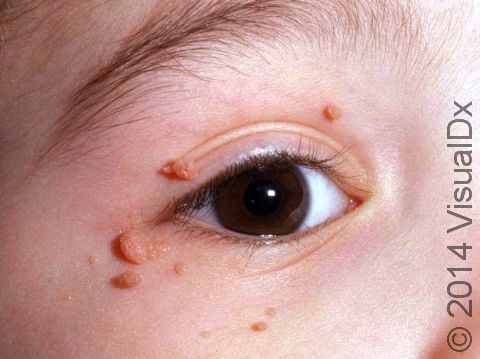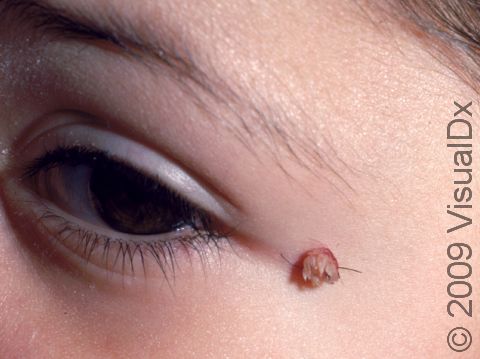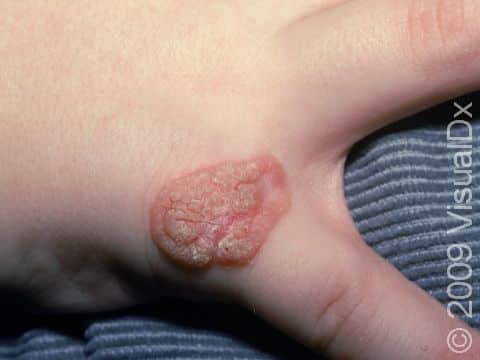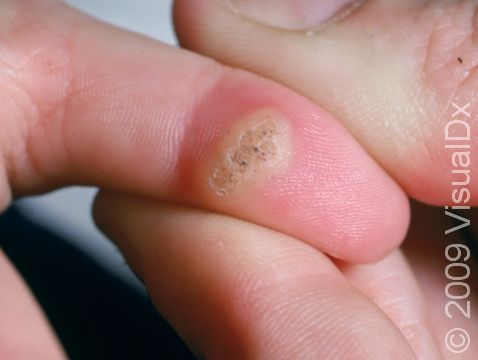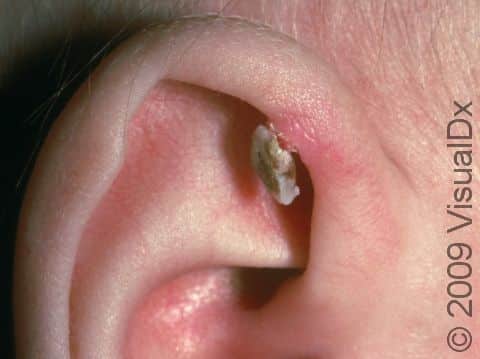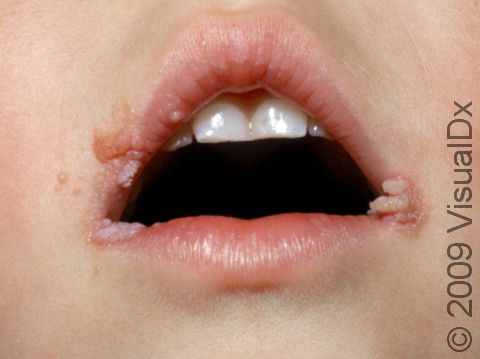Common Wart
Warts are common growths on the skin that are present in 5%-10% of all children. They are caused by a virus called the human papillomavirus (HPV). Warts appear as circular raised, often skin-colored growths that have a roughened, irregular surface. Common warts (verruca vulgaris) occur most frequently on the fingers, backs of the hands, face, knees, and elbows. They are usually not painful and are harmless. Warts will usually resolve on their own and do not require any treatment.
Some other types of warts include plantar warts, flat warts, genital warts, and periungual warts (warts that grow under or along the nail).
Who's At Risk?
All populations of people can have warts, but they are rare in children younger than 2 years. Infants who are affected were usually infected during the birthing process. If mothers have genital warts, they can be passed to their infants during vaginal birth. It is unclear how common warts are spread in young children; it is thought they are spread through direct contact with the virus through a break in the skin. However, warts are not considered highly contagious.
Signs & Symptoms
Warts may occur singly or in multiples and often have what appear to be multiple small black “dots” at the surface from tiny blood vessels.
Common warts are rough, thick papules (solid bumps) ranging in size from 1 mm to over 10 mm. In lighter skin colors, warts may be pink, skin-colored, or light brown. In darker skin colors, warts may be pink, skin-colored, purple, brown, or gray. Warts can be covered with scale, which can be whitish, yellow, brown, or gray.
Self-Care Guidelines
Before trying any self-care measures, consult your baby’s medical professional.
Because warts can resolve on their own, it is not necessary to treat all warts. Additionally, treatment of warts may not always destroy them, nor will it necessarily keep other warts from appearing. Treatment can be painful, cause scars, and may need to be repeated, so it should only be done in cases where the warts are highly bothersome or interfere with your baby’s daily life.
Family members should avoid sharing personal items such as towels.
Treatments
If an infant has warts, your medical provider will make recommendations for treatment.
Visit Urgency
Any infant with warts should be checked by a medical professional.
Trusted Links
References
Bolognia J, Schaffer JV, Cerroni L. Dermatology. 4th ed. Philadelphia, PA: Elsevier; 2018.
James WD, Elston D, Treat JR, Rosenbach MA. Andrew’s Diseases of the Skin. 13th ed. Philadelphia, PA: Elsevier; 2019.
Kang S, Amagai M, Bruckner AL, et al. Fitzpatrick’s Dermatology. 9th ed. New York, NY: McGraw-Hill Education; 2019.
Paller A, Mancini A. Paller and Mancini: Hurwitz Clinical Pediatric Dermatology. 6th ed. St. Louis, MO: Elsevier; 2022.
Last modified on June 25th, 2024 at 4:13 pm

Not sure what to look for?
Try our new Rash and Skin Condition Finder
